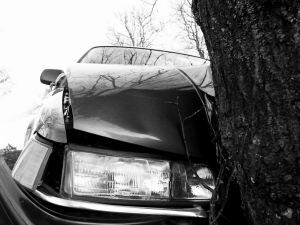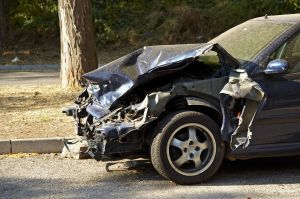Among the new laws passed in 2011 is a new California insurance law, SB 946, which aims to complement existing law that requires equal coverage of mental health conditions and medical conditions. The Mental Health Parity Law and a settlement agreement reached by insurance companies and the California Department of Managed Health Care provide for insurance coverage of mental health conditions, including the full spectrum of autism. Insurance companies must provide equal mental health coverage and maximum lifetime benefits at the same rates as medical coverage.
Existing regulations required that all treatment be provided by licensed professionals, such as psychologists, registered nurses, and social workers. However, this language excluded certified providers of “applied behavior analysis” (ABA,) a prevalent strategy meant to improve behavior and quality of life for families with autistic children. The distinction between a licensed profession and a certified one is made by how the profession is regulated. Licensed professions are regulated by the state while certified professions are regulated by non-governmental entities.
The new law has a great impact on families with autistic children attempting to obtain health insurance and make claims to pay for behavioral treatments. It requires insurance companies to cover mental health treatment such as applied behavior analysis as long as it is prescribed by a licensed professional. The mental health treatment itself may be carried out by professionals who are not regulated specifically by the State of California.
The California Association of Health Plans opposed the bill, stating an industry study that the bill would effectively raise insurance costs by $850 million. A similar study carried out by the California Health Review found that it would raise insurance costs by about $93 million and lower the costs of special education and social services, paid for by the taxpayer, by about $140 million.
Families affected by the bill should take some exceptions to coverage into consideration. Insurance plans provided by federal and state governments, such as ERISA, CalPERS, Medicare, and Medi-Cal, are excluded from the law’s requirements. Those plans have their own requirements regarding mental healthcare. Also, plans that are considered “self-funded” or paid for by an employer who did not purchase a fully funded plan from a third party are excepted from the bill’s regulations. It is difficult for insured employees to tell the difference and should call their employer’s human resources department to inquire.
Moreover, the bill is effective July 1, 2012, but it sunsets on July 1, 2014 only two years later. The federal healthcare plan is set to take effect at that time and SB 946 will have to be re-evaluated to comply with federal law. Therefore, families should look closely for deadlines and news updates to determine future pay outs for mental healthcare. In the meantime, Autism Speaks, a prominent autism advocacy organization, recommends that persons harmed by insurance companies violating this or other insurance laws contact an attorney to see if legal action is appropriate.
Besides the laws already mentioned, insurance companies doing business in California must adhere to the California Insurance Code. Insurance companies may not engage in tactics meant to delay payment or offer to pay out low amounts on claims in bad faith. Additionally, they must communicate promptly with the insured regarding their claims. The insurance company must tell you why they denied your claim.
Continue Reading ›
 San Francisco Injury Lawyer Blog
San Francisco Injury Lawyer Blog













 A story in The Oakland Tribune serves as a disheartening reminder that DUI dangers do not disappear after the holiday season fades away and that
A story in The Oakland Tribune serves as a disheartening reminder that DUI dangers do not disappear after the holiday season fades away and that  While nothing can ever undo the harm caused by child molester, our
While nothing can ever undo the harm caused by child molester, our  Given their frequency, DUI incidents don’t always make the news but The Oakland Tribune reported this week on an unusual twist on the mix of alcohol and vehicle operation – drunk flying. The air operations division of the California Highway Patrol noticed a small plane flying erratically during the afternoon hours of Tuesday January 2, 2012. In violation of federal aviation regulations, the plane flew as low as 50 feet from the ground and a mere 100 feet from highway traffic. The CHP used the plane’s tail numbers to identify the plane which was registered in Pennsgrove. When the pilot landed at the Petaluma Municipal Airport, authorities approached and immediately noted the smell of alcohol on the sixty-two year old pilot’s breath. After administering field sobriety tests, the CHP arrested the pilot on suspicion of flying while intoxicated.
Given their frequency, DUI incidents don’t always make the news but The Oakland Tribune reported this week on an unusual twist on the mix of alcohol and vehicle operation – drunk flying. The air operations division of the California Highway Patrol noticed a small plane flying erratically during the afternoon hours of Tuesday January 2, 2012. In violation of federal aviation regulations, the plane flew as low as 50 feet from the ground and a mere 100 feet from highway traffic. The CHP used the plane’s tail numbers to identify the plane which was registered in Pennsgrove. When the pilot landed at the Petaluma Municipal Airport, authorities approached and immediately noted the smell of alcohol on the sixty-two year old pilot’s breath. After administering field sobriety tests, the CHP arrested the pilot on suspicion of flying while intoxicated.  An annual
An annual  The State of California requires drivers to carry insurance at all times. Many drivers assume that carrying the minimum insurance required should cover damage done to their car in most instances. However, this is not the case.
The State of California requires drivers to carry insurance at all times. Many drivers assume that carrying the minimum insurance required should cover damage done to their car in most instances. However, this is not the case. As
As